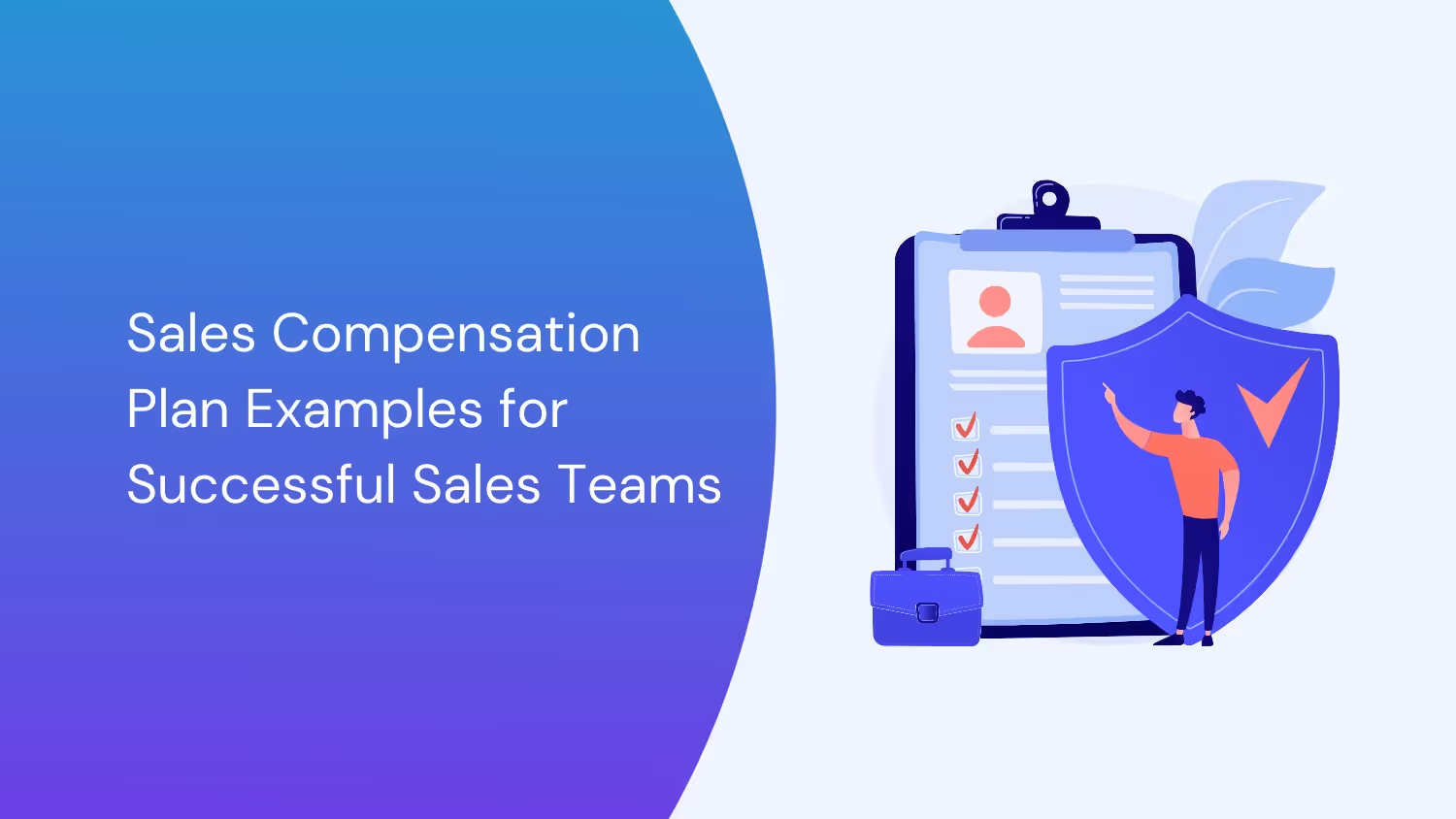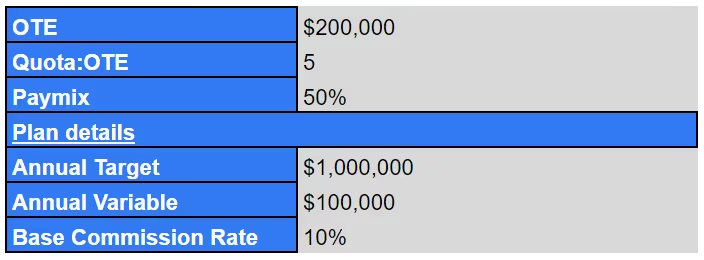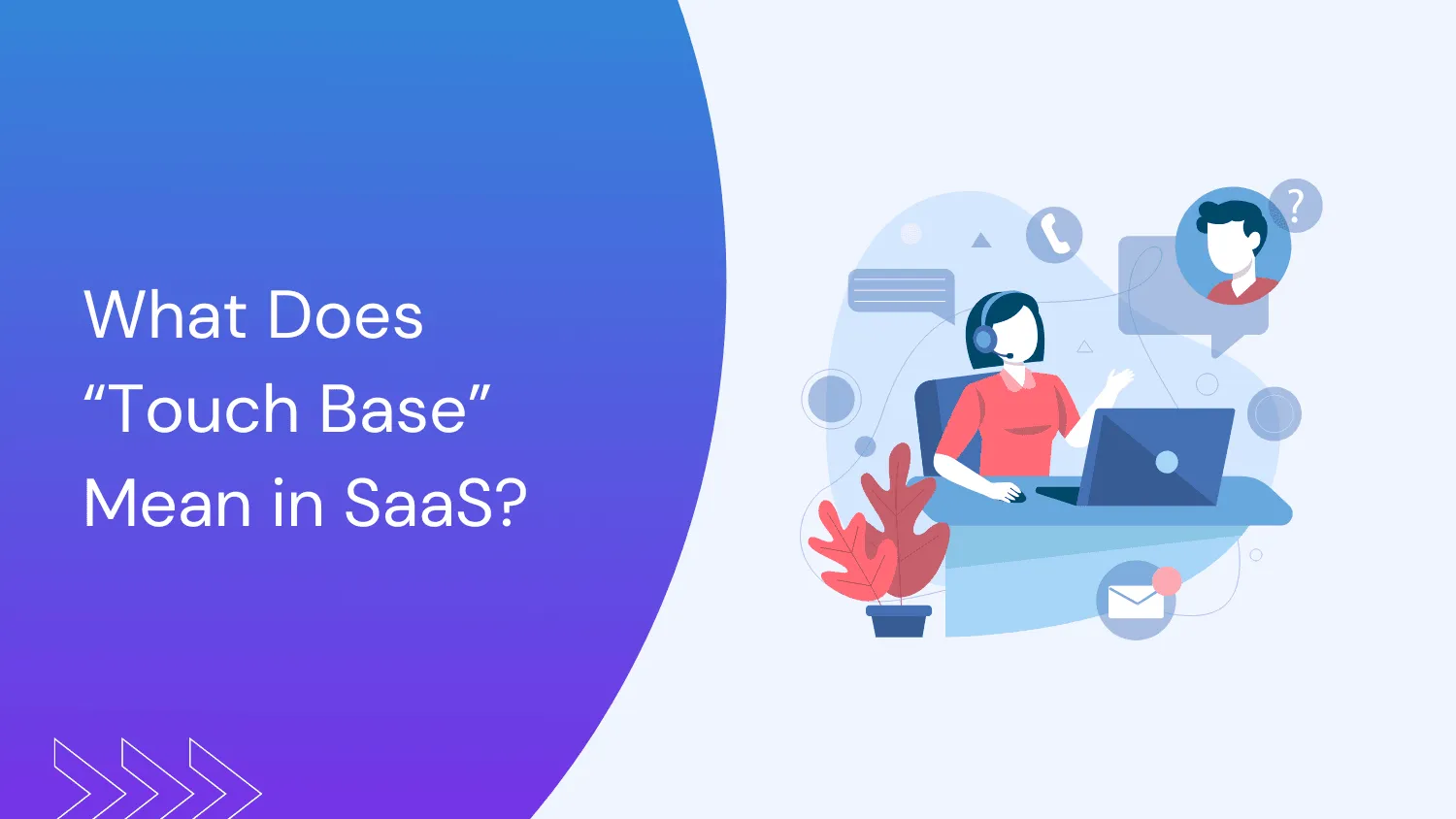4 Proven SaaS Sales Compensation Plan Examples that Boost Revenue

Is your sales compensation plan actually driving the results you need? Or is it just another spreadsheet collecting digital dust?
The truth is, designing an effective sales comp plan can be the difference between hitting your revenue targets and watching your best talent walk out the door. In the competitive SaaS landscape, your compensation strategy isn't just about paying people—it's about communicating what you value and inspiring the behaviors that drive growth.
In this guide, we'll break down four battle-tested SaaS sales compensation plans that actually work. Whether you're managing Account Executives closing new business, Account Managers expanding existing relationships, or SDRs building your pipeline, you'll discover practical frameworks you can implement right away.
No theoretical fluff—just actionable examples from real SaaS companies that have cracked the compensation code to align team performance with company objectives.
Let's dive in.
Designing an Effective Sales Compensation Plan
Before diving into the examples, let's discuss the essential elements of designing an effective sales compensation plan.
A well-designed plan should:
- Align with company goals and values
- Determine the appropriate pay mix (base salary vs. variable pay)
- Set fair and motivating quotas/targets
- Reward both individual and team performance
- Account for different roles and experience levels. And for teams managing multiple comp structures, tools like PaystubHero can help employees clearly see their pay breakdowns, commissions, and bonuses in one place.
To create a plan that drives the desired behaviors and outcomes, carefully consider factors such as your company's growth stage, sales cycle length, and market conditions. Regularly review and adjust your plan to ensure it remains effective as your business evolves.
Sales Compensation Plan for Account Managers
Account Managers (AMs) play a crucial role in SaaS companies by focusing on customer retention and expansion. An effective compensation plan for AMs should include a mix of base salary and variable pay, with a focus on renewal and expansion targets. The plan should also incentivize collaboration with other teams and reward AMs for bringing in new business through referrals.
Example: Land & Expand Plan for Account Managers
In this example, we'll look at a Land & Expand compensation plan designed for an Account Manager named Jasmine.

Jasmine's Salary & Pay Mix:
- On-target earnings (OTE): $160,000
- 60% comes from fixed $96,000 base salary
- 40% or $64,000 is variable commissions
Jasmine's Accounts & Renewal Quota:
- Manages $1M in existing Annual Recurring Revenue (ARR)
- 80% Gross Renewal Rate target = Renew $800,000 ARR
Commission Rates:

- Renewal Tier 1 (if renews $0-$800k ARR): 1.2% commission
- Renewal Tier 2 (if renews over $800k ARR): 5% commission
- Expansion ARR Commission Rate = 8%
- Services Revenue Commission Rate: 4%
- SPIFF: Referral ARR: 1%
Impact on Revenue:
As a decision-maker, it's essential to understand how this compensation plan can drive revenue growth and contribute to the overall success of your SaaS business. Let's take a closer look at Jasmine's performance and its impact on the company's bottom line.
- Q1: Jasmine renews $600k out of her $1M renewal base, securing a significant portion of the company's existing revenue.some text
- Earnings: 1.2% x $600,000 = $7,200 Q1 Renewal Commission
- Q2: Jasmine successfully expands an account by $100k in ARR, demonstrating the effectiveness of the Land & Expand strategy.some text
- Earnings: $100k x 8% expansion CTC = $8,000 Q2 Expansion Commission
- Q3: Jasmine's team generates $50,000 in services revenue, showcasing the value of cross-team collaboration.some text
- Earnings: 4% x $50,000 = $2,000 services revenue commission
- Q4: Jasmine refers to a new expansion deal worth $200,000 in ARR, demonstrating the power of leveraging existing relationships to drive new business.some text
- Earnings: 1% x $200,000 = $2,000 SPIFF bonus
Jasmine's total variable pay: $19,200
- Q1 Renewal Commission: $7,200
- Q2 Expansion Commission: $8,000
- Q3 Services Revenue Commission: $2,000
- Q4 Referral SPIFF: $2,000
With her $96,000 base salary, Jasmine's total compensation = $96,000 + $19,200 = $115,200
Overall, Jasmine's performance under this Land & Expand compensation plan contributes a total of $950,000 in revenue for the company, broken down as follows:
- Q1 Renewal: $600,000
- Q2 Expansion: $100,000
- Q3 Services Revenue: $50,000
- Q4 Referral Expansion: $200,000
By implementing this compensation plan, your SaaS business can incentivize Account Managers like Jasmine to focus on key revenue-driving activities, such as renewals, expansions, cross-team collaboration, and referrals. This not only helps maintain a stable revenue base but also promotes growth from existing customers, ultimately contributing to the long-term success and profitability of your company.
Want to implement a Land & Expand compensation plan for your Account Managers?
Download our free "Land & Expand Compensation Plan for AMs" template and start customizing it for your SaaS sales team today!
Sales Compensation Plan for Account Executives
Account Executives (AEs) are responsible for driving new business growth in SaaS companies. A well-designed compensation plan for AEs should include a balanced mix of base salary and variable pay, with a focus on achieving and exceeding sales quotas. The plan should also incentivize shorter sales cycles and new logo acquisition to align with company goals.
Example: Land and Expand Compensation Plan for Account Executives
Let's explore an example of a land and expand compensation plan for Account Executives (AEs) in a SaaS company. This plan is designed to motivate AEs to drive new business growth, shorten sales cycles, and acquire new customers while aligning with the company's overall objectives.
Company Background and Objectives:
- The company is aiming for a 30% growth rate this year.
- AEs typically close 10 deals per quarter, with an average deal size of $50,000.
- The company's booking to billing percentage is 84%, and the billing to collection percentage is 96%.
Current Team Performance:
- High Performers (Top 10%) achieve 125% of their quota.
- Core Performers (Middle 70%) achieve between 40-90% of their quota.
- Low Performers (Bottom 20%) achieve less than 40% of their quota.
Expected Average Attainment Percentage:
- High Performers: 140%
- Core Performers: 90%
- Low Performers: 50%
Let’s look at the compensation plan based on these assumptions.

Salary & Pay Mix:
- On-target earnings (OTE): $200,000
- 50% base salary ($100,000), 50% variable pay ($100,000)
Quota & Commission:
- Annual Quota: $1,000,000
- Base Commission Rate: 10%

Tiered Multipliers:
- Tier 1: 100% for achievement up to 100% of quota
- Tier 2: 125% for achievement between 100% and 125% of quota
- Tier 3: 150% for achievement above 125% of quota

SPIFFs:
- 1% for sales cycle < 90 days
- $1,250 for logo acquisition > 10 logos
Impact on Revenue:
Let's consider an example where an AE achieves 110% of their annual quota and closes deals with the following characteristics:
- Total Annual Contract Value (ACV) closed: $990,000
- 60% of deals closed within 90 days sales cycle
- 12 new logos acquired
Earnings Breakdown:
- Base Salary: $90,000
- Variable Pay:some text
- Base Commission (10% of $900,000 quota): $90,000
- Accelerated Commission (125% multiplier on $90,000 excess): $11,250
- Sales Cycle SPIFF (1% of $594,000): $5,940
- Logo Acquisition SPIFF (12 logos > 10): $1,250
- Total Variable Pay: $108,440
- Total On-Target Earnings: $198,440
In this scenario, the AE's efforts contribute $990,000 in new revenue for the company, with a significant portion coming from deals closed within a shorter sales cycle. The AE also brings in 12 new logos, expanding the company's customer base.
By achieving 110% of their quota, the AE earns accelerated commissions, which serve as a strong motivator for overperformance.
The SPIFFs for shorter sales cycles and logo acquisition further align the AE's goals with the company's objectives, encouraging them to prioritize efficient sales processes and new customer acquisition.
Interested in creating a Balanced compensation plan for your AEs?
Download our "Land & Expand Compensation Plan for AEs" template and start building a plan that drives new business growth.
Example: Tiered Commission Plan for Account Executives
A tiered commission structure is a powerful way to motivate and reward your Account Executives (AEs) for their hard work and dedication. By setting clear performance benchmarks and offering increasing commission rates as those benchmarks are met, you can encourage your team to push themselves to exceed their quotas and drive more revenue for the company.
Let's break down how a tiered commission plan works and how it can benefit both your AEs and your business.
The tiered commission plan is based on an AE's quota attainment percentage. As the AE reaches higher levels of quota attainment, they unlock higher commission rates, which are applied to their total sales.
Commission Tiers:

- Tier 1: 0-60% quota attainment pays 50% of the base commission rate
- Tier 2: 60-100% quota attainment pays 100% of the base commission rate
- Tier 3: 100-150% quota attainment pays 125% of the base commission rate
- Tier 4: 150-250% quota attainment pays 150% of the base commission rate
Let's see how this would work for an AE named Sarah with a $60,000 variable pay component and a $900,000 annual quota:
If Sarah achieves 88% of her quota, selling $792,000, she would fall into Tier 2. Her total commission earned would be:
$60,000 variable pay x 88% attainment x 100% payout multiplier (Tier 2) = $52,800
In addition to the tiered commissions, the plan also includes SPIFFs (Sales Performance Incentive Funds) for specific achievements.

In this example, there are two SPIFFs:
- 0.5% extra commission for multi-year contracts
- 0.5% extra commission for deals with upfront payment terms
If Sarah closed $198,000 worth of multi-year contracts and $198,000 worth of deals with upfront payment terms, she would earn:
$198,000 x 0.5% = $990 for each SPIFF Total SPIFFs earned = $1,980
Sarah's total variable earnings would be: Commissions: $52,800 SPIFFs: $1,980 Total: $54,780
The tiered commission structure and SPIFFs work together to motivate AEs to not only hit their quotas but also to pursue strategic objectives that benefit the company, such as securing multi-year contracts and upfront payments.
Impact on Revenue:
Let's consider the financial impact of this plan for a team of 8 AEs, each with the same $900,000 quota and $60,000 variable pay as Sarah, and assuming they all achieve 88% of their quota:
Total quota: $7,200,000 Total achievement: $6,336,000 Total commissions: $422,400 Total SPIFFs (assuming similar performance to Sarah): $15,840 Total payout: $438,240 Cost to company: 6.92% of total achievement
The tiered commission plan offers several benefits for both the AEs and the company:
- Motivates AEs to overachieve: The increasing commission rates at higher levels of quota attainment encourage AEs to push beyond their quotas.
- Rewards top performers: The tiered structure ensures that your top performers are well-compensated for their hard work and dedication.
- Aligns AE and company goals: SPIFFs can be designed to incentivize AEs to focus on key strategic objectives, such as multi-year deals or upfront payment terms.
- Provides cost control: By setting quotas and variable pay amounts, the company can effectively control the total cost of sales compensation.
Want to reward your top-performing AEs?
Download our "Tiered Commission Plan for AEs" template and start building a plan that motivates quota overachievement.
Sales Compensation Plan Example for Sales Development Representatives
Sales Development Representatives (SDRs) play a vital role in SaaS companies by sourcing qualified opportunities and building pipeline. An effective compensation plan for SDRs should include a mix of base salary and variable pay, with a focus on both the quantity and quality of the opportunities they generate. The plan should also reward SDRs for contributing to closed-won deals to align with the success of the entire sales team.
Example: Land and Expand Compensation Plan for Sales Development Representatives
In this example, we'll explore a compensation plan template designed specifically for SDRs, which includes a base salary, variable pay, and performance-based commissions.
The SDR compensation plan consists of three main components:
- Base Salary: A fixed amount paid regularly, regardless of performance.
- Variable Pay: A portion of the on-target earnings (OTE) that is tied to meeting specific performance targets.
- SPIFFs (Sales Performance Incentive Funds): Additional bonuses for achieving specific goals or milestones.
Let's dive into the details using the example of an SDR named Mark.

Mark's Salary and Variable Pay:
- On-target earnings (OTE): $80,000
- Base salary: $48,000 (60% of OTE)
- Variable pay: $32,000 (40% of OTE)
Mark's Targets and Quotas:
- Sales Qualified Opportunities (SQOs): Mark must source 140 qualified SQOs annually.
- Pipeline Generation: Mark must contribute to a $7 million pipeline target.

Commission Rates:
- SQO Target (60% weighting)some text
- Tier 1 (0-140 SQOs): $137 per SQO
- Tier 2 (>140 SQOs): $171 per SQO
- Pipeline Target (40% weighting)some text
- Tier 1 ($0-$7M Pipeline): 0.18% of pipeline generated
- Tier 2 (Accelerators apply over $7M pipeline)
SPIFF:
- 1% commission for any Closed Won Annual Recurring Revenue (ARR)
In Q1, Mark generates 120 SQOs, falling into Tier 1, and earns: 120 SQOs x $137 = $16,440 SQO Commission
He also generates $2.5 million in pipeline, earning: $2.5M x 0.18% = $4,500 Pipeline Commission
In Q2, Mark generates 50 SQOs (Tier 1) and $2 million in pipeline: 50 SQOs x $137 = $6,850 SQO Commission $2M x 0.18% = $3,600 Pipeline Commission
Additionally, one of Mark's deals closes, resulting in $50,000 ARR. He earns: $50,000 x 1% = $500 SPIFF
Mark's total variable earnings: Q1 Commissions: $16,440 + $4,500 = $20,940 Q2 Commissions: $6,850 + $3,600 + $500 = $10,950 Total: $31,890
With his $48,000 base salary, Mark's total compensation comes to $79,890.
Impact on Revenue:
A well-designed SDR compensation plan can have a significant impact on both the individual SDRs and the company as a whole:
- Motivates SDRs to perform: By offering performance-based commissions and SPIFFs, the plan encourages SDRs to work hard and consistently meet or exceed their targets.
- Aligns SDR and company goals: The plan's focus on SQOs and pipeline generation ensures that SDRs are working towards objectives that directly contribute to the company's success.
- Provides earning potential: The combination of base salary, variable pay, and commissions offers SDRs a competitive compensation package and the opportunity to significantly increase their earnings through high performance.
- Helps with budgeting and forecasting: By setting clear targets and commission rates, the company can better predict and control the costs associated with SDR compensation.
Ready to motivate your SDRs to generate more qualified pipeline?
Download our "Land & Expand Compensation Plan for SDRs" template and start customizing it for your team today!
Conclusion
Let's face it—even the best sales compensation plan is worthless if it sits in a drawer.
The four frameworks we've explored aren't just theoretical models; they're battle-tested sales compensation templates that can transform your sales organization when properly implemented.
Whether you're struggling with customer retention, new business acquisition, pipeline generation, or simply rewarding your top performers appropriately, these compensation structures provide a starting point for driving meaningful change.
Remember that compensation isn't just about money—it's about communication.
Your comp plan tells your team exactly what matters to your business. When your Account Managers see higher commissions for expansions than renewals, they understand where to focus. When your SDRs earn SPIFFs for quality opportunities that actually close, they learn to qualify more effectively.
The most successful SaaS companies adjust, iterate, and refine based on changing business priorities and market conditions. Your compensation strategy should be as agile as your product development.
Don't wait for your best performers to start looking elsewhere.
Take what you've learned here, adapt it to your unique business needs, and create a compensation framework that not only retains top talent but inspires everyone on your team to reach their full potential.
Your revenue targets—and your sales team—will thank you.
Take the Next Step with Visdum
Creating and managing effective sales compensation plans doesn't have to be a manual, time-consuming process.
Forward-thinking SaaS companies are turning to sales commission software like Visdum to automate calculations, provide real-time visibility, and ensure their comp plans deliver maximum impact.
Visdum's compensation management platform helps you:
- Design and implement any of the compensation models discussed in this article
- Provide real-time earnings visibility to your sales team
- Automate commission calculations and eliminate spreadsheet errors
- Generate powerful analytics to continuously optimize your compensation strategy
- Integrate seamlessly with your CRM and financial systems
Your sales team deserves compensation plans that motivate, your finance team deserves accurate calculations, and you deserve the peace of mind that comes with knowing your compensation strategy is working exactly as intended.
Ready to take your SaaS sales compensation strategy to the next level?
Schedule a demo with our sales compensation experts today!

.webp)

.webp)

